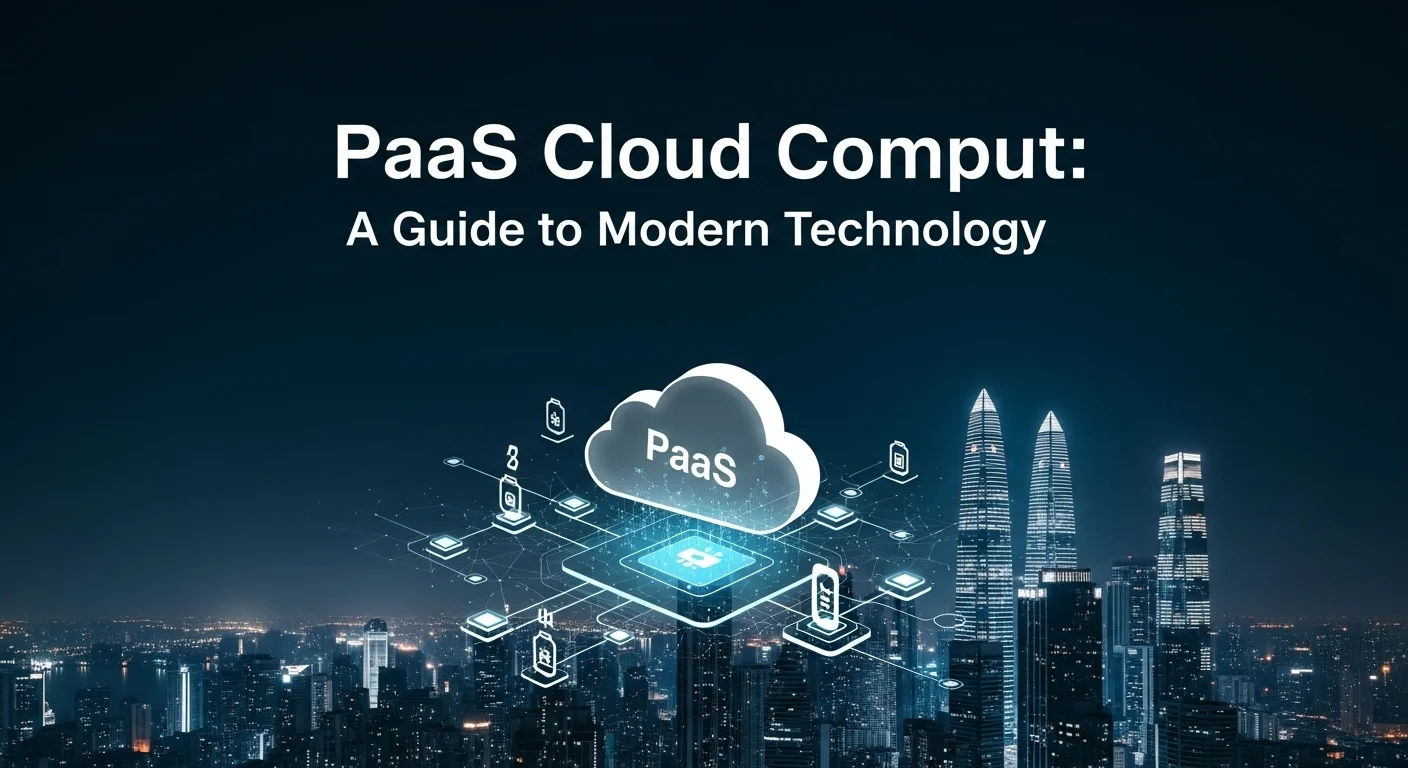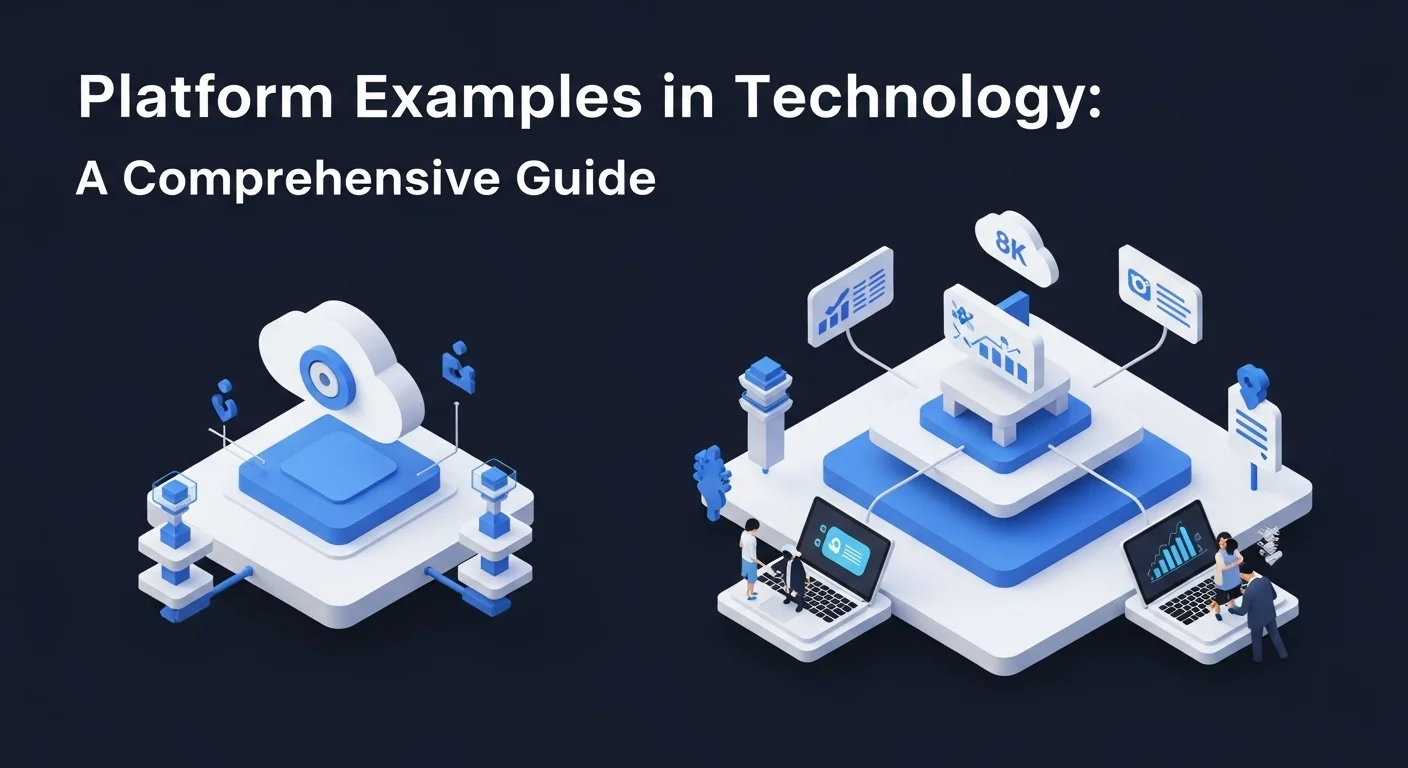What is PaaS? A Simple Guide to Faster, Smarter App Development

Executive Summary
Ever feel like you're spending more time managing servers and software updates than actually building great applications? I've been there. That's where Platform as a Service, or PaaS, comes in as a breath of fresh air. Think of it as the perfect middle ground in the cloud world. It’s not as bare-bones as Infrastructure as a Service (IaaS), where you get the raw parts, and it's not as locked-down as Software as a Service (SaaS), which gives you a finished product. PaaS provides a ready-made workshop—a complete environment where you can develop, test, and deploy your applications without worrying about the tedious upkeep of the underlying infrastructure. For businesses, this means getting your ideas to market faster, cutting down on operational headaches, and scaling up with ease. This guide will walk you through everything you need to know about PaaS, using simple terms and real-world insights to show you how this powerful technology can give you a serious competitive edge.
Table of Contents
Table of Contents
- What Exactly is PaaS and Why Should You Care?
- How PaaS is Used in the Real World
- The Real-World Benefits of Using PaaS
What Exactly is PaaS and Why Should You Care?
In my years as a cloud architect, I've seen countless companies get tangled up in the complexities of their own IT infrastructure. It's a common story. The goal is to innovate, but the reality is a constant battle with server maintenance, software patching, and network configurations. This is precisely the problem that cloud computing set out to solve. You’ll often hear the terms IaaS, PaaS, and SaaS thrown around. Think of them as different levels of service. Infrastructure as a Service (IaaS) gives you the basic building blocks—virtual servers, storage, networking. It's powerful, but you still have to manage a lot yourself. Software as a Service (SaaS) is a ready-to-use application, like your Gmail or Salesforce account. It’s simple, but you can't customize it much.
Then there's PaaS, or Platform as a Service. This, for me, is where the magic happens for developers. PaaS is a cloud model that gives you a complete platform to build, run, and manage your applications without the headache of maintaining that platform yourself. The cloud provider handles everything in their data center—the servers, the networks, the storage, the operating system, the databases, and all the development tools. It’s like leasing a fully equipped professional kitchen. You don't have to worry about the plumbing, the electricity, or buying the ovens; you can just walk in and start cooking. This frees up your development team to do what they do best: write amazing code and create value for your customers.
How PaaS is Used in the Real World
The applications for PaaS are incredibly practical and have a huge impact. One of the biggest areas is in agile software development and what we call DevOps. PaaS creates a shared, ready-to-go environment where development and operations teams can collaborate smoothly. I’ve seen it completely transform how teams work, enabling them to automate their testing and deployment processes. This means they can release new features and bug fixes to users faster and more reliably than ever before. It's the engine behind a modern continuous integration and continuous delivery (CI/CD) culture.
PaaS is also the perfect playground for building modern applications, especially those that use APIs (Application Programming Interfaces) and microservices. Instead of one giant, clunky application, today’s apps are often built as a collection of small, independent services that talk to each other. PaaS makes it so much easier to build, deploy, and manage these individual microservices. It's also a powerhouse for the Internet of Things (IoT) and big data. Many PaaS platforms come with built-in tools and support for languages that are essential for developing IoT apps or crunching massive datasets, helping businesses uncover insights that were previously out of reach.
The Real-World Benefits of Using PaaS
When I talk to business leaders, the benefits of PaaS really resonate. The most immediate one is a dramatic reduction in development time and cost. You're not buying expensive hardware or software licenses upfront. Instead, you're on a pay-as-you-go model, which is far more efficient. You only pay for the resources you actually use. Scalability is another massive win. I remember a project with an e-commerce client whose traffic would skyrocket during the holidays. With PaaS, their application scaled automatically to handle the load, ensuring a smooth customer experience without anyone on our team having to manually add more servers at 3 a.m. This kind of elasticity is invaluable.
Ultimately, PaaS boosts efficiency by letting your smartest people focus on innovation instead of maintenance. This shift is a powerful competitive advantage. When you're weighing your options between IaaS, PaaS, and SaaS, PaaS often hits that sweet spot between control and convenience. It empowers developers, speeds up innovation, and gives businesses the agility they need to succeed in a fast-moving digital world. For any company that's serious about technology, understanding and using PaaS isn't just a good idea—it's a strategic necessity for growth.

Your Complete Guide to Choosing and Using PaaS
So, you're sold on the 'why' of PaaS. Let's get into the 'how.' Making the leap to Platform as a Service is more than just a technical switch; it's about adopting a new mindset and knowing how to navigate the options. This guide is your roadmap. The first thing to really grasp is the architecture. A PaaS solution isn't just one thing; it's a stack of services working together. At the bottom, you have the infrastructure (servers, etc.), all managed by the provider. On top of that sits the platform software—the operating system, databases, and web servers. The top layer is what your developers will interact with: the development tools, APIs, and the control panel. Understanding these layers makes it clear where the provider's job ends and yours begins. You get a fully functional workshop without ever having to worry about the foundation it's built on.
When it comes to choosing a provider, the big names in the cloud world all have strong offerings. You've got Amazon Web Services (AWS) with its Elastic Beanstalk, which is fantastic for deploying apps written in almost any popular language. Then there's Microsoft Azure's App Service, which is a dream for teams that are already deep in the Microsoft ecosystem. And you can't forget Google App Engine, famous for its incredible ease of use and auto-scaling capabilities, making it a go-to for web apps with unpredictable traffic. I’ve worked with all three, and the choice often comes down to your team's existing skills, your specific technical needs, and your budget. There are also more specialized players like Heroku, which is beloved by developers for its simplicity and huge library of add-ons, and Red Hat OpenShift, a powerful enterprise-grade platform built on Kubernetes. Do your homework here; comparing providers is a crucial step.
To get the most out of PaaS, you need to think differently about how you build software. Adopting a DevOps culture is non-negotiable. PaaS and DevOps are a perfect match because the platform gives you the automation tools needed to build a seamless pipeline from code to deployment. This means integrating your code repository (like GitHub), automated tests, and deployment scripts directly into the PaaS environment. The goal is to make releasing software a routine, push-button process. Another key technique I always recommend is building with a microservices architecture. Instead of a single, monolithic app, design it as a collection of small, independent services. PaaS is tailor-made for this, as it excels at managing and scaling many small components. This approach results in applications that are more robust, easier to update, and far more scalable.
Don't overlook the ecosystem that comes with your PaaS provider. This is a huge part of the value. Most platforms have a marketplace of third-party services you can add with a single click. Need a powerful database, a caching layer, or a monitoring tool? You can provision it in minutes, fully managed and integrated. I’ve seen teams build complex, production-ready applications in a fraction of the time it would have taken otherwise, simply by composing their app from these pre-built services. The quality of a provider's marketplace and the strength of its user community can be a deciding factor. Tapping into this shared knowledge and these ready-made components makes your journey into the cloud infinitely smoother.

Pro Tips and Strategies for Mastering PaaS
Adopting PaaS is the first step, but truly mastering it is what sets successful teams apart. Over the years, I've gathered some hard-won tips and strategies that can dramatically improve your experience and results. First and foremost, get serious about the shared responsibility model for security. Yes, the provider secures the platform, but you are always responsible for securing your application and your data. I can't stress this enough. This means using strong identity controls, enforcing multi-factor authentication (MFA), and giving users the absolute minimum permissions they need to do their jobs. Always encrypt your sensitive data, both as it travels over the network and when it's stored. Regularly use tools to scan your code for vulnerabilities. Security in the cloud is a partnership, and you have to do your part.
My next big piece of advice is to watch your costs like a hawk. The pay-as-you-go model is a double-edged sword. It's incredibly efficient, but it can lead to surprise bills if you're not careful. Use the platform’s built-in cost management tools. Set up budget alerts that notify you when you're approaching your limit. Be smart about auto-scaling; you want to scale up quickly to meet demand, but it's just as important to scale back down when traffic subsides so you're not paying for idle resources. A pro tip for saving money: schedule your development and testing environments to automatically shut down on nights and weekends. A little governance here goes a long way.
To really level up, your team needs to embrace automation. While the web dashboard is fine for starters, the real power of PaaS is in its command-line interface (CLI). By scripting common tasks—like deploying a new version of your app or creating a test environment—you reduce human error, save time, and ensure every process is repeatable. This is the heart of a great CI/CD pipeline. When you integrate the PaaS CLI with tools like GitHub Actions or Jenkins, you create a fully automated workflow where code is tested and deployed without manual intervention. This transforms deployments from a stressful event into a complete non-issue.
A common mistake I see is trying to do everything with the tools built into the platform. A smart PaaS strategy involves integrating with best-in-class third-party services. Use specialized tools for Application Performance Management (APM), logging, and monitoring. Services like Datadog or New Relic can give you incredibly deep insights into your application's health, helping you find and fix bottlenecks you never knew you had. These tools provide the visibility you need to operate a complex application with confidence. A great platform is made even better by its ability to work well with the tools your team already loves.
Finally, never stop learning. The cloud evolves at a dizzying pace, with providers releasing new features and services constantly. I encourage my teams to set aside 'tinker time' to experiment with these new capabilities. PaaS makes this incredibly cheap and low-risk. You can spin up a new environment to try out a serverless feature or a new AI service, and then tear it down a few hours later, paying only pennies for the experiment. A great place to stay current is by following the official blogs of the major providers, like the AWS Compute Blog. This culture of curiosity and continuous improvement is what will keep you ahead of the curve and allow you to turn your PaaS platform from a simple tool into a true engine for innovation.
Expert Reviews & Testimonials
Sarah Johnson, Business Owner ⭐⭐⭐⭐
As a small business owner, this was a really helpful starting point. I finally feel like I understand what PaaS is. I'd love to see a follow-up with more case studies for non-tech companies, but this was a great read!
Mike Chen, IT Consultant ⭐⭐⭐⭐⭐
This is a fantastic and practical overview of PaaS. It cuts through the jargon and gets straight to the point. The real-world examples and pro tips in the final section are particularly valuable. Highly recommended.
Emma Davis, Software Developer ⭐⭐⭐⭐⭐
Excellent article! As a developer, I appreciated the focus on how PaaS actually impacts our workflow. It clarified a lot of concepts for me and reinforced why moving to PaaS was the right call for my team.



